This blue light technique has been used and studied. Blue Light Cystoscopy for Detection and Treatment of Bladder Cancer.

Repeat Use Of Blue Light Cystoscopy With Hexvix Cysview Shows Excellent Tolerability Oslo Cancer Cluster Innovation Park
Blue Light Cystoscopy.
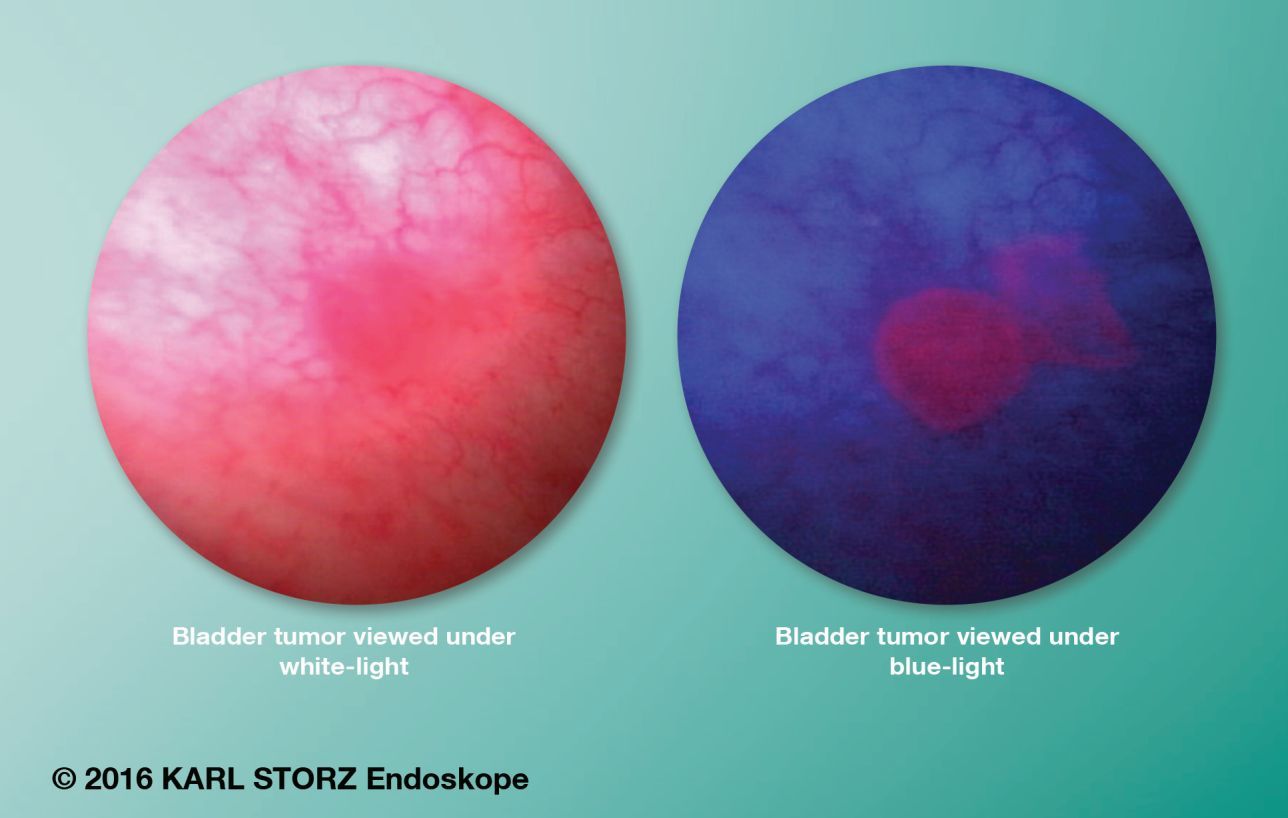
Bladder cancer blue light cystoscopy. It has been firmly established that hexaminolevulinate-assisted blue light cystoscopy HAL-BLC reduces cancer recurrence rates. At The University of Kansas Cancer Center our urologic oncology surgeons use Blue Light Cystoscopy with Cysview to better diagnose evaluate and remove bladder cancer tumors and lesions. BLC involves instillation of a photosensitizer into the bladder.
A recent meta-analysis evaluated blue-light cystoscopy BLC in 14 randomized. Last year about 100 bladder resections were carried out at the Hampshire Hospitals NHS Foundation Trusts Basingstoke and North Hampshire Hospital and at the Hampshire clinic. As a result of positive outcomes in clinical trials the technology is included in the bladder cancer guidelines published by the American Urological Association and the Society of Urologic Oncology.
Blue light cystoscopy BLC is one such technique and carries many benefits over the historical standard of care white light cystoscopy WLC. Blue Light Cystoscopy with Cysview is performed the same way as a traditional cystoscopy except that the urologist uses a special imaging solution and a blue light. Currently the joint AUA and Society of Urologic Oncology SUO guidelines on nonmuscle-invasive bladder cancer NMIBC recommend offering BLC to all patients with NMIBC.
This review explores the impact of HAL-BLC on other meaningful outcomes in patients with bladder cancer including disease progression and earlier detection of disease at the time of surveillance cystoscopy. For photodynamic blue light cystoscopy performed with KARL STORZ Photodynamic Diagnostic PDD system El Segundo California USA as an adjunct to white light cystoscopy in the detection of non-muscle invasive papillary bladder cancer in patients with known or suspected bladder cancer on the basis of a prior cystoscopy2 HAL works by exploiting. Then with the use of special equipment the tumor cells will fluoresce or appear as bright blue tissue in the bladder.
Before examining the bladder the scope is positioned at the bladder neck where a reddishpink fluorescence is identified from a tangential effect confirming that Cysview has been applied properly. Blue light cystoscopy BLC using hexaminolevulinate Cysview improves the detection of nonmuscle invasive bladder cancer NMIBC1-3 BLC results in lower recurrence rate and a better recurrence-free survival as well as a progression benefit4 However false-positive FP fluorescence can occur for various reasons and can vary among different series. Herein we evaluated the detection of malignant lesions in a heterogenous group of patients in the real world setting and documented the change in risk category due to upstaging or upgrading.
Systematic cystoscopy using blue light is then performed with 30 and 70 degree telescopes. Surveillance is usually performed as an ofce-based procedure with white-light exible cystoscopy WLFC. The conventional first-line treatment for the removal of bladder cancer is via transurethral removal of bladder tumor or TURBT for short.
Areas of bladder cancer glow under the blue light making it easier to detect at its earliest stages. Blue light cystoscopy BLC using hexaminolevulinate HALCysviewHexvix has been previously shown to improve detection of nonmuscle-invasive bladder cancer NMIBC. With current techniques one would expect about 35 of these to recur and require further.
TURBT is used for surveillance and treatment of non-invasive bladder cancer or if there are multiple sites to check for cancer cells and growth. As bladder cancer is associated with a high rate of recurrence after transurethral resection of bladder tumour TURBT patients undergo regular follow-up cystoscopies usually every 36 months 1. Blue light cystoscopy is initiated.
A medical trial has shown that blue light cystoscopy will reduce the recurrence rate of bladder cancer from 35 to just 10. An important advance in bladder tumor detection involves the use of a special chemical that can be taken up by tumors. Herein we evaluated the detection of malignant lesions in a heterogenous group.
BLC is an optical imaging agent and supplement to WLC that involves the insertion of a photosensitizer into the bladder. Superior visualization of bladder cancer provided by blue light cystoscopy BLC with hexaminolevulinate HCl HAL may result in increased identification of unique tumors and more-complete resections The economic impact of BLC with HAL in the management of non-muscle-invasive bladder cancer in the US has not been fully investigated A budget impact model assessed costs at 2 years. Blue light cystoscopy BLC using hexaminolevulinate HALCysviewHexvix has been previously shown to improve detection of non-muscle-invasive bladder cancer NMIBC.
Blue-light cystoscopy with Cysview is the only FDA-approved technology for enhanced detection of bladder cancer turning tumors bright pink during surgery. This can take a small tumor that is difficult to see and make it much more obvious. What is Blue Light Cystoscopy.
Learn more about bladder cancer in our Health Library. When using blue light we have. Blue light cystoscopy BLC can augment the use of WLC to improve both the detection and resection of bladder cancers.
How BLC works. Blue Light Cystoscopy for Detection and Treatment of Bladder Cancer - YouTube. Its also a critical aid for identifying recurrences early on and potentially preventing.
Advanced Urologic Care for Men and Women.

Blue Light Technology Provides Better Bladder Cancer Diagnosis Palm Beach Florida Weekly

Bladder Lesions Under White And Blue Light With Cysview A Low Grade Download Scientific Diagram

Role Of Blue Light Cystoscopy To Detect Bladder Cancer

Enhanced Cystoscopy Improves The Care Of Bladder Cancer Patients Renal And Urology News

Blue Light And White Light Cystoscopy Images Cysview Com
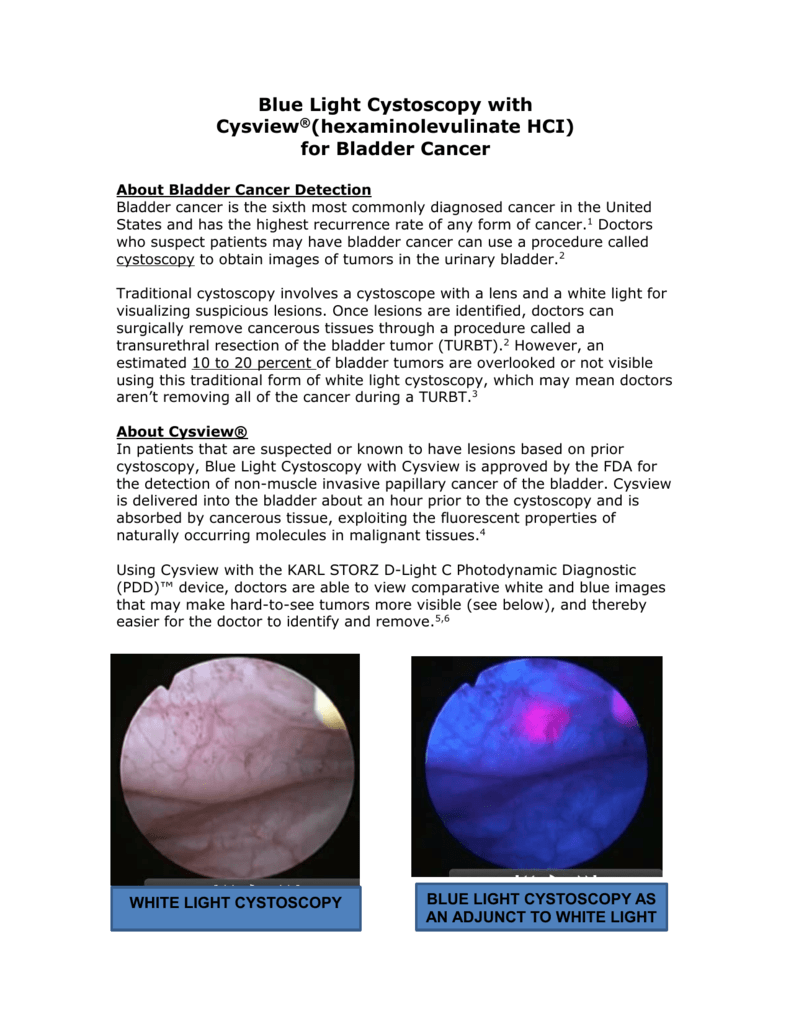
Blue Light Cystoscopy With Cysview Fact Sheet
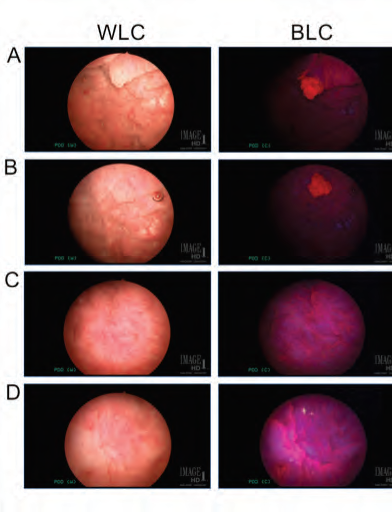
Blue Light Shows Urothelial Cancer
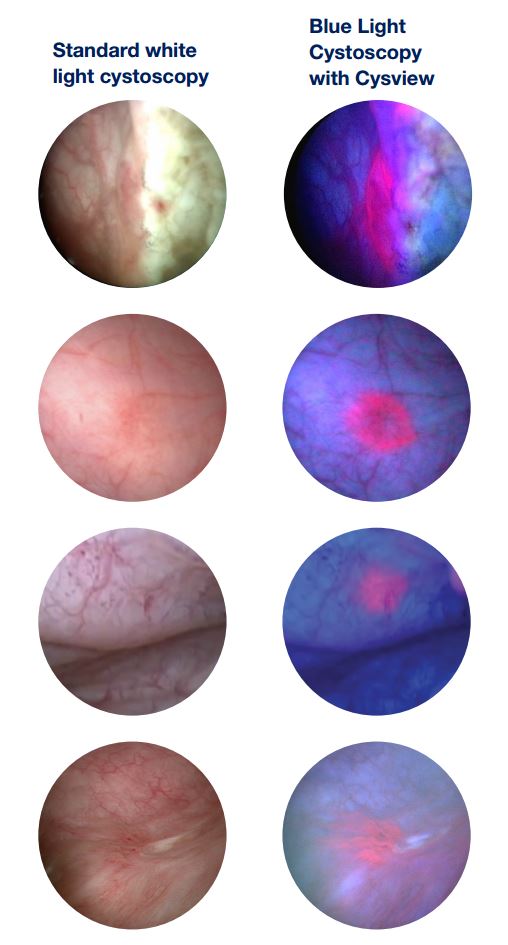
Blue Light Cystoscopy Unc Department Of Urology
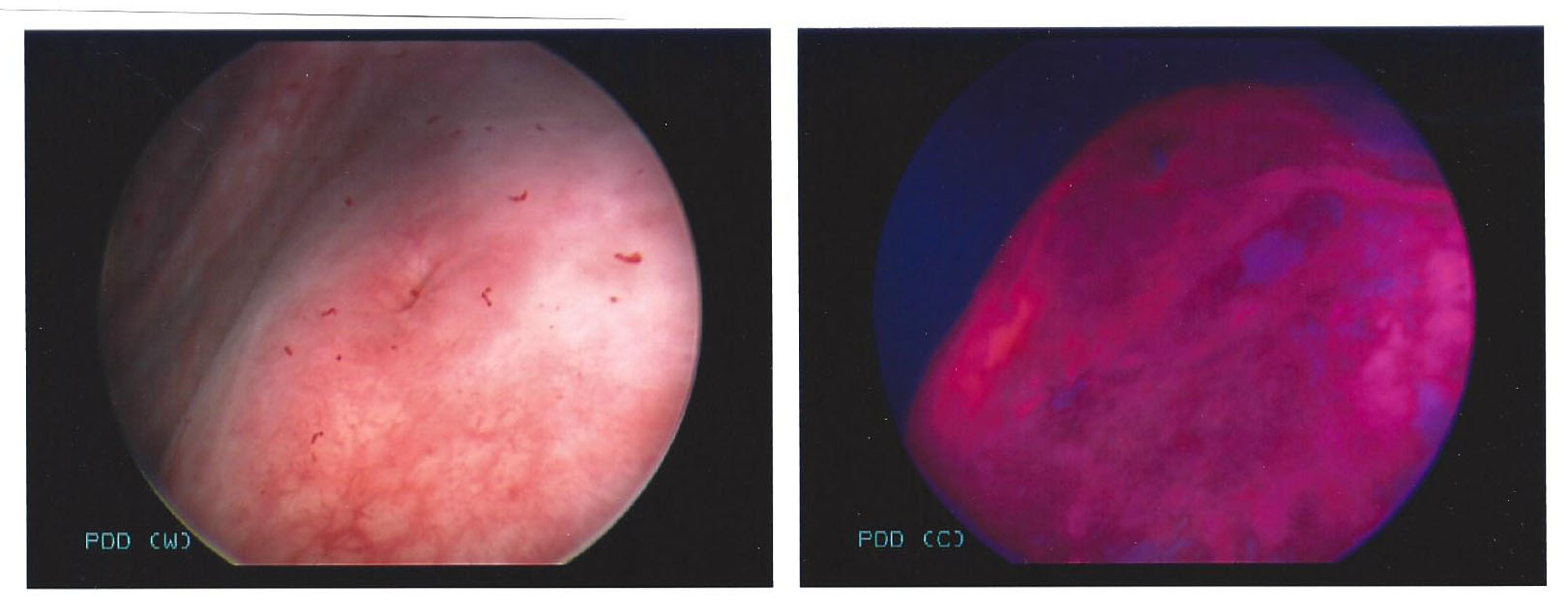
Lighting The Way For Better Bladder Cancer Detection Renaissance School Of Medicine At Stony Brook University
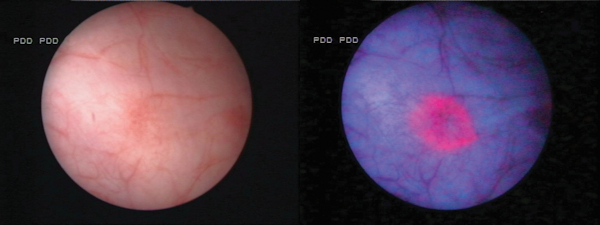
A Clearer Picture Of Cancer New Bladder Cancer Detection Comes To Tanner Tanner Health System

Blue Light Cystoscopy Mount Sinai Medical Center Urology
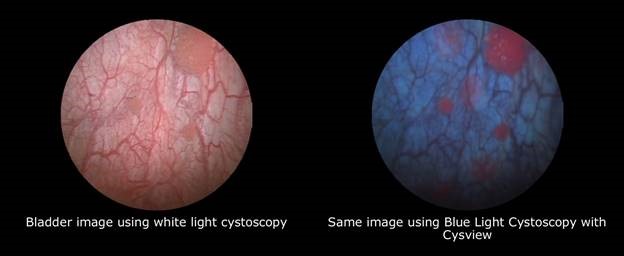
Blue Light Cystoscopy With Cysview Brigham And Women S Faulkner Hospital
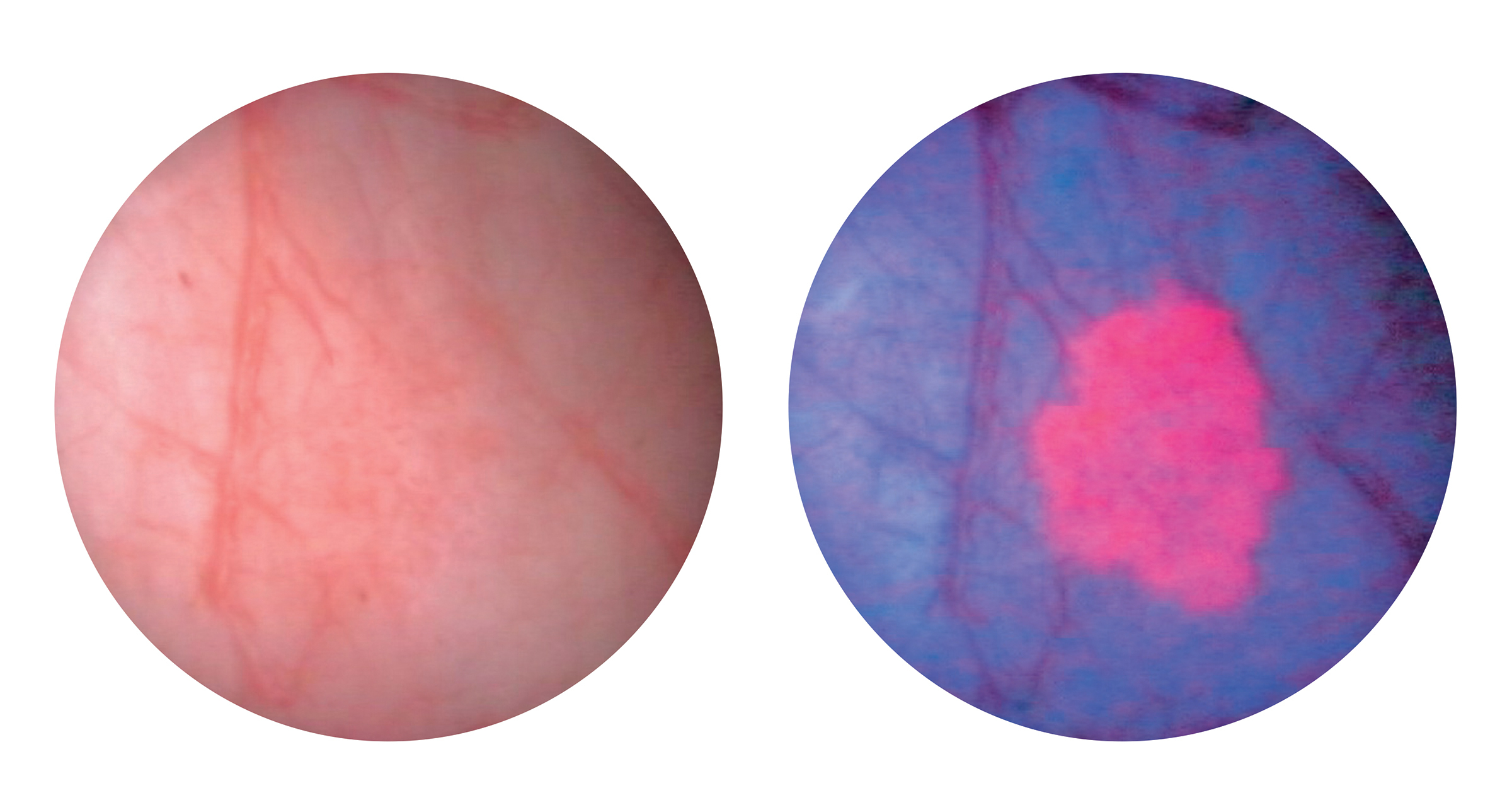
Karl Storz Announces New Non Muscle Invasive Bladder Cancer Detection System Photodynamic Diagnosis Pdd Blue Light Flexible Video Cystoscopy Business Wire

Q A Blue Light Cystoscopy Versus White Light Cystoscopy In The Diagnosis Of Bladder Cancer Fox Chase Cancer Center Philadelphia Pa

Sylvester Only Site In South Florida To Offer New Bladder Cancer Detection System Inventum University Of Miami Miller School Of Medicine

Blue Light Cystoscopy Karl Storz

Gold Standard For Bladder Cancer Detection Blue Light Cystoscopy
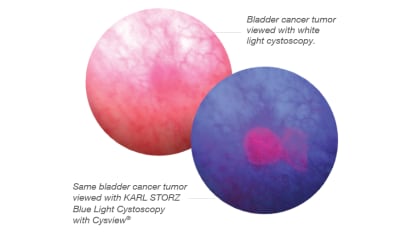
Blue Light Cystoscopy Karl Storz

Karl Storz Endoscopy America Inc Showcased Blue Light Cystoscopy With Cysview At Premier Inc S Annual Breakthroughs Conference Business Wire

